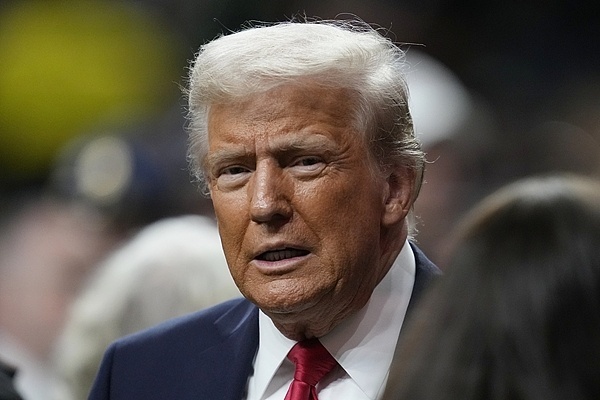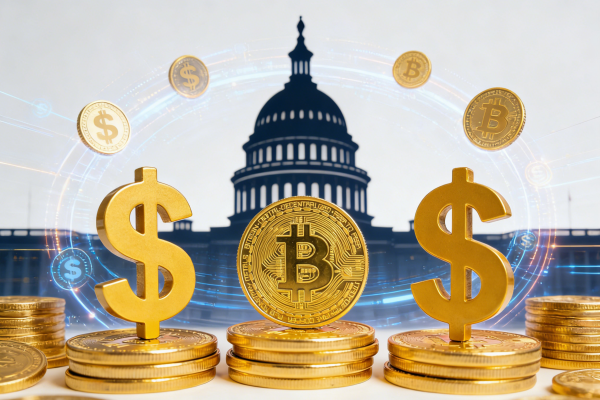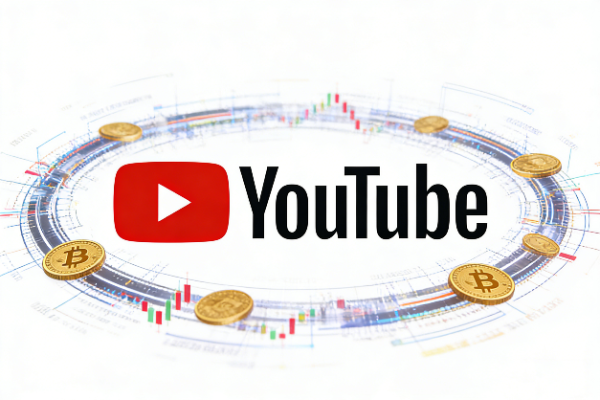After $6.6 trillion evaporated globally: A guide to investment survival based on history

In early April 2025, Trump set off a global economic storm with a 10% comprehensive tariff policy. From the failure of gold hedging to the evaporation of 5.4 trillion US dollars in the market value of US stocks, to the wave of protests and the urgent mediation of the business community, this crisis is like a high-risk game that tests investors' judgment. This article will analyze the logic behind the chaos from four levels: financial chain reaction, Trump's "economic revolution", social and business rebound, and historical lessons and investment prospects.
1. Financial chain reaction under the impact of tariffs: Why did gold lose?
After Trump's tariffs were implemented, global stock markets evaporated 6.6 trillion US dollars, US stocks lost 5.4 trillion in two days, and 400,000 accounts shrank significantly. Surprisingly, gold, a safe-haven asset, was not spared, with a drop of 1.9% on April 5. What's the reason?
The answer lies in the chain effect of leveraged trading. The high leverage in the futures market magnified the decline of US stocks, and investors' floating losses triggered "margin calls". In order to avoid forced liquidation, they sold high-liquidity assets such as gold to make up for the margin. Gold ETF positions fell sharply by 2.3% that day, confirming this pressure. This short-term sell-off is driven by trading sentiment rather than macro trends. When the market stabilizes, funds may flow back to gold, but at present, the risk-averse logic has been overturned by liquidity demand.
At the same time, WTI crude oil fell below $60 per barrel, weakening inflation expectations. Crude oil has a significant weight in the US CPI, and its price decline offsets the price pressure of tariffs, prompting the interest rate futures market to push the Fed's interest rate cut expectations to 5 times. In the trade-off between inflation and recession, the Fed is more inclined to stabilize growth. This reminds investors that short-term safe-haven assets may be under pressure, but expectations of interest rate cuts may benefit bonds and growth stocks.
2. Trump's "economic revolution" and Wall Street's surprise: Hoover's lessons
Trump has a clear attitude towards the crisis. On April 5, he declared on the Truth platform: "This is an economic revolution, and we will definitely win." He hinted that the stock market crash was "deliberate" and aimed at reshaping the trade pattern. However, this gamble caught Wall Street off guard.
Treasury Secretary Benson was considered a bridge in the financial world, but on April 6, news broke that he might resign due to "ridiculous tariff calculations." MSNBC revealed that he only analyzed scenarios in White House meetings, and the decision was actually led by Peter Navarro, Howard Lutnick and Jamieson Greer. Wall Street has nowhere to turn, and JPMorgan Chase predicts that US GDP growth will fall to -0.3%, and the recession alarm is sounded.
Hoover in history provides a mirror. In 1929, Hoover ignored the opposition of the consortium and promoted the Smoot-Hawley Tariff Act, raising the tariff rate to 59%, triggering a global trade war and ultimately exacerbating the Great Depression. Trump's desperate gamble today is similar, but his team exchanged a 20% drop in US stocks for a dollar drop to 101 points, 5 interest rate cuts, and did not trigger a substantial recession (April 5 employment data was solid). This fits its weak dollar and low interest rate goals, but supply chain disruptions and stock price plunges have made companies complain. Investors should be alert: short-term policy dividends may mask long-term risks.
3. Social backlash and correction pressure: market signals are emerging
Market turmoil quickly ignited social anger. On April 6, the "Let Go!" movement swept more than 1,000 cities around the world, with protesters opposing tariffs, federal layoffs and Musk's DOGE department. On the National Mall in Washington, slogans such as "Penguins Against Tariffs" and "Make My 401k Great Again" pointed directly to the impact of policies on the middle class. Tesla became a target because of Musk's alliance with Trump, and showrooms in the United States and Europe were frequently attacked, and boycott sentiment was high.
The business community chose more direct actions. On April 5, technology reporter Kara Swisher revealed that a group of technology and financial leaders went to Mar-a-Lago to try to "discuss common sense" with Trump. These people who once donated millions to his inauguration are now facing trillions of losses and regard Musk as a potential target of pressure. At the same time, rumors of Bessent's resignation and the tariff power bill proposed by Republican Senator Chuck Grassley and others show that internal and external pressures are forcing the Trump team to face the choice of error correction. Texas Senator Ted Cruz warned: "Full tariffs will destroy jobs and hit the economy hard." The confidence of policy implementers is facing severe challenges in reality.
IV. Learning from history and investment choices: hedging or bargain hunting?
Is this storm a technical adjustment or a prelude to a substantial recession? The answer depends on policy space and error correction capabilities. The Federal Reserve still has about 400 basis points of room for interest rate cuts (assuming the current interest rate is 4.8%), and the interest saved by a 100 basis point interest rate cut far exceeds the fiscal tightening of Musk's DOGE department. If economic data does not deteriorate across the board, the asset crash may become a good opportunity to bargain. However, cuts in scientific research funding (such as NIH) and global retaliatory tariffs may weaken the long-term competitiveness of the United States. The consequences of the trade war in the Hoover era are a lesson for the past.
The political dimension is also critical. The 2026 midterm elections are Trump's hidden concern. If the majority of both houses is lost, his policies will be difficult to implement. This may explain his motivation to rush to create "results" in the short term. At present, the speed of Trump's team's corrections - such as the results of the Mar-a-Lago talks - will become the vane of the next stage. If short-term fluctuations and long-term goals can be properly balanced, this "economic revolution" may have a turnaround; if Hoover's mistakes are repeated, the consequences will be unpredictable. Investors can consider the following strategies:
Short-term: Focus on bonds and defensive stocks under the expectation of interest rate cuts, and avoid highly leveraged assets.
Medium-term: If policy corrections are successful, undervalued US stocks and gold may rebound.
Long-term: Be wary of the escalation of the trade war and diversify investments to emerging markets to hedge risks.
Conclusion:
Trump used tariffs as a chess piece to try to reshape the economic landscape, but exposed the fragility of his strategy in market fluctuations and social rebounds. His team has demonstrated its ability to manipulate the market, but the lessons of Hoover remind us that the cost of self-willedness can be high. Your next investment step depends on the balance between short-term chaos and long-term trends. Only by understanding the game can you find opportunities in the crisis.









